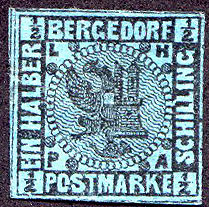
Bergedorf's postal authority issued only five stamps between 1861 and 1867. Bergedorf is the smallest field of German stamp collecting.

Bergedorf's postal authority issued only five stamps between 1861 and 1867. Bergedorf is the smallest field of German stamp collecting.
Due to its good geographic location, Bergedorf and environs (the Bi-Urban Condominium of the sovereign city states of Lübeck and Hamburg to be precise) had already received postal services from the Hanseatic league early on. The city's postal connections to neighbouring Hamburg were especially well developed at an early stage.
Since the 1420 Treaty of Perleberg, Bergedorf with Geesthacht and the Vierlande municipalities (Altengamme, Curslack, Kirchwerder and Neuengamme) had belonged to both of the Hanseatic cities of Hamburg and Lübeck, therefore named Beiderstädtischer Besitz (Bi-Urban Condominium). Because the condominium belonged to both cities, the curious condition arose where the condominium's post could not be administered by either Hamburg or Lübeck. Therefore, the condominium formed its own tiny autonomous postal jurisdiction. Several other principalities also established postal departments in the condominium's capital Bergedorf city. In 1746, Electoral Hanover set up its own postal department in Bergedorf city, which lasted as Royal Hanoverian post until 1846. In 1785, the dynasty of Thurn und Taxis succeeded Hanover and established its own postal department, which was not closed until 1851. In 1839, Prussia finally opened a postal department in Bergedorf city as well.
From 1806 to 1813, the condominium was first occupied, and as of 1811 annexed by the First French Empire during the Napoleonic Wars. During this time, the postal system was taken over by the Imperial French Post.
Finally on 1 April 1847, the Beiderstädtisches Postamt (Bi-Urban Mail) or Lübeck-Hamburgisches Postamt (Postal Department of Lübeck and Hamburg) emerged from the Prussian postal department. In the following years, this arrangement was extended. In 1856, further departments opened in the condominial territory, namely in the Geesthacht exclave (since 1937 no part of the region any more) and in Kirchwerder.
From 1855 to 1856, the Bi-Urban Mail signed several postal agreements modelled on the German-Austrian Postal Treaty, including agreements with Prussia and Mecklenburg-Schwerin.
After Hamburg and Lübeck had already issued their first stamps in 1859, Bergedorf followed in 1861. However, Hamburg's stamps were officially sold beside those from the Bi-Urban Mail at the post office counters.
On 1 November 1861, five definitive stamps with values of ½, 1, 1½, 3, and 4 Hamburg Schillings (16 schillings made up 1 Hamburg mark) were issued in Bergedorf. These five values could satisfy the postal tariffs for all distance and weight needs of the time. At that time (1863), only 12,468 people lived in the whole postal region. [1] The imperforated definitive stamps were printed when required and were valid until 31 December 1867. The stamps are square in shape. Besides the value, the country's name and the term "Postmarke", the centre of each stamp depicted one half of the coat of arms of each of Hamburg and Lübeck.
The Bergedorf stamp series is often referred to as a "growing series" because each value is a little bit larger than its predecessor. Thus, the 4 Schilling value looks twice as large as the ½ Schilling value. Together with the different paper colours of the values, the sizing helped to distinguish between the various stamps.
Effective 1 January 1868, the Free and Hanseatic city of Hamburg bought Lübeck's share in the Bi-Urban Condominium which passed completely into the former's ownership. On this date, the joint entry into the North German Confederation (the predecessor of the 1871 German Empire) took place. Since that time, the postal history of Bergedorf shares that of the North German Confederation. Bergedorf's five stamps were only valid until that day.

Herzogtum Lauenburg is the southernmost Kreis, or district, officially called Kreis Herzogtum Lauenburg, of Schleswig-Holstein, Germany. It is bordered by the district of Stormarn, the city of Lübeck, the state of Mecklenburg-Vorpommern, the state of Lower Saxony, and the city state of Hamburg. The district of Herzogtum Lauenburg is named after the former Duchy of Saxe-Lauenburg.
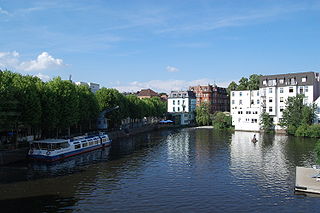
Bergedorf is the largest of the seven boroughs of Hamburg, Germany, named after Bergedorf quarter within this borough. In 2020 the population of the borough was 130,994.

One of the functions of the North German Confederation was to handle the mail and issue postage stamps, which it began doing, by means of the North German Postal Union (Norddeutscher Postbezirk), on 1 January 1868.

The Greater Hamburg Act, in full the Law Regarding Greater Hamburg and Other Territorial Readjustments, was passed by the government of Nazi Germany on 26 January 1937, and mandated the exchange of territories between Hamburg and the Free State of Prussia. It became effective on 1 April 1937

The Duchy of Saxe-Lauenburg, was a reichsfrei duchy that existed from 1296 to 1803 and again from 1814 to 1876 in the extreme southeast region of what is now Schleswig-Holstein. Its territorial center was in the modern district of Herzogtum Lauenburg and originally its eponymous capital was Lauenburg upon Elbe, though the capital moved to Ratzeburg in 1619.
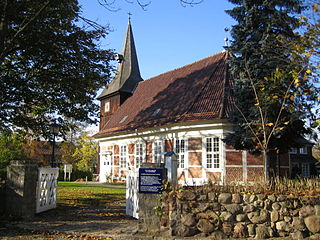
Geesthacht is the largest city in the District of the Duchy of Lauenburg in Schleswig-Holstein in Northern Germany, 34 kilometres (21 mi) south-east of Hamburg on the right bank of the River Elbe.

The Province of Schleswig-Holstein was a province of the Kingdom of Prussia and the Free State of Prussia.

The Free and Hanseatic City of Lübeck was a city-state from 1226 to 1937, in what is now the German states of Schleswig-Holstein and Mecklenburg-Vorpommern.

Soon after the German Hanseatic League (1241) was founded, regulated messenger routes were developed. In the Free Imperial City of Lübeck, the conveyance of correspondence by letter was supervised by the mercantile council of the Scania Market (Schonenfahrer), which also appointed the messenger master (postmaster) and the remainder of the personnel.
The Austro-German Postal Union was a union of the postal systems of the Austrian Empire and the pre-Empire German states. The union was established on 1 July 1850. The administrative prerequisites were already provided by the German Zollverein established in 1834. On 18 October 1847 the representatives convened to the German Postal Conference in Dresden on a suggestion of Prussia and Austria. Not until 6 April 1850, Prussia and Austria, slowed by political circumstances, closed a contract establishing a German–Austrian Postal Association in Berlin.

By the Hamburg Agreement on 8 March 1701, Mecklenburg was separated into two duchies with limited autonomy, which formed a collective state–as of 1815, the Grand Duchies of Mecklenburg-Schwerin and Mecklenburg-Strelitz. Since 1755, they had the same constitution and were under the control of the same parliament. In 1815, both parts became Grand Duchies by the Congress of Vienna.

This article is about the postage stamps and postal history of Hamburg from the medieval messengers until the entry of the Hamburg Postal Administration into the Northern German Postal District in 1868.
The city of Hamburg in Germany is made up of seven boroughs and subdivided into 104 quarters. Most of the quarters were former independent settlements. The areal organisation is regulated by the constitution of Hamburg and several laws. The subdivision into boroughs and quarters was last modified in March 2008.

The Hanseaten is a collective term for the hierarchy group consisting of elite individuals and families of prestigious rank who constituted the ruling class of the free imperial city of Hamburg, conjointly with the equal First Families of the free imperial cities of Bremen and Lübeck. The members of these First Families were the persons in possession of hereditary grand burghership of these cities, including the mayors, the senators, joint diplomats and the senior pastors. Hanseaten refers specifically to the ruling families of Hamburg, Lübeck and Bremen, but more broadly, this group is also referred to as patricians along with similar social groups elsewhere in continental Europe.

The Hamburg-Bergedorf railway opened in 1842 is one of the oldest lines in Germany and was the first railway line in Northern Germany. The 16.5 km long line was extended to Berlin in 1846.
This is a survey of the postage stamps and postal history of Holstein, Schleswig-Holstein, Schleswig and incidentally Lauenberg. Separate stamps were issued for Holstein (1850), Schleswig (1864-1867), Holstein (1864-1866), Schleswig-Holstein (1865) and Schleswig (1920).
The accession of the city state of Hamburg to the German Customs Union, commonly known as Zollverein, in 1888 was the culmination of a project for the economic and monetary union of Germany, stretching back to 1819. In that year Schwarzburg-Sondershausen joined Prussia’s internal customs union, the first other state to do so and the first of many to follow.
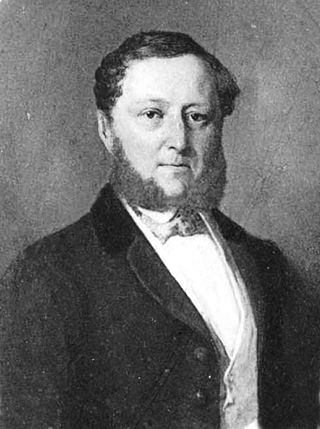
Carl Hermann Merck was one of the leading Hamburg statesmen of the 19th century, holding the office of Syndicus from 1847 until his death in 1880.
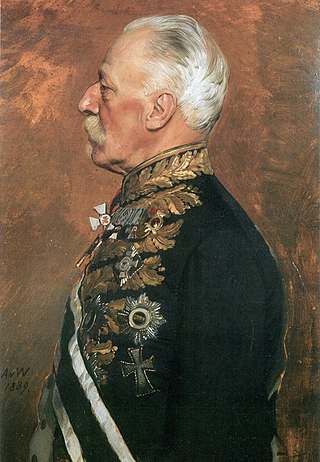
Daniel Christian Friedrich Krüger was a diplomat in the service of the city state of Lübeck and also jointly of the Hanseatic cities of Lübeck, Hamburg and Bremen. He was born in Lübeck on 22 September 1819 and died in Berlin on 17 January 1896.
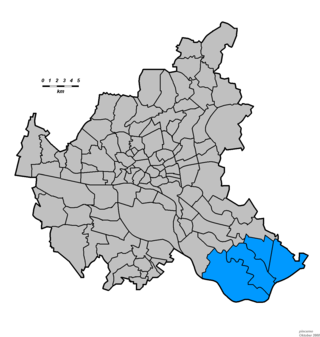
Vierlande is the name given to a roughly 77-square kilometre region in the Hamburg district of Bergedorf which has a population of 18,419 and comprises four quarters of the city.